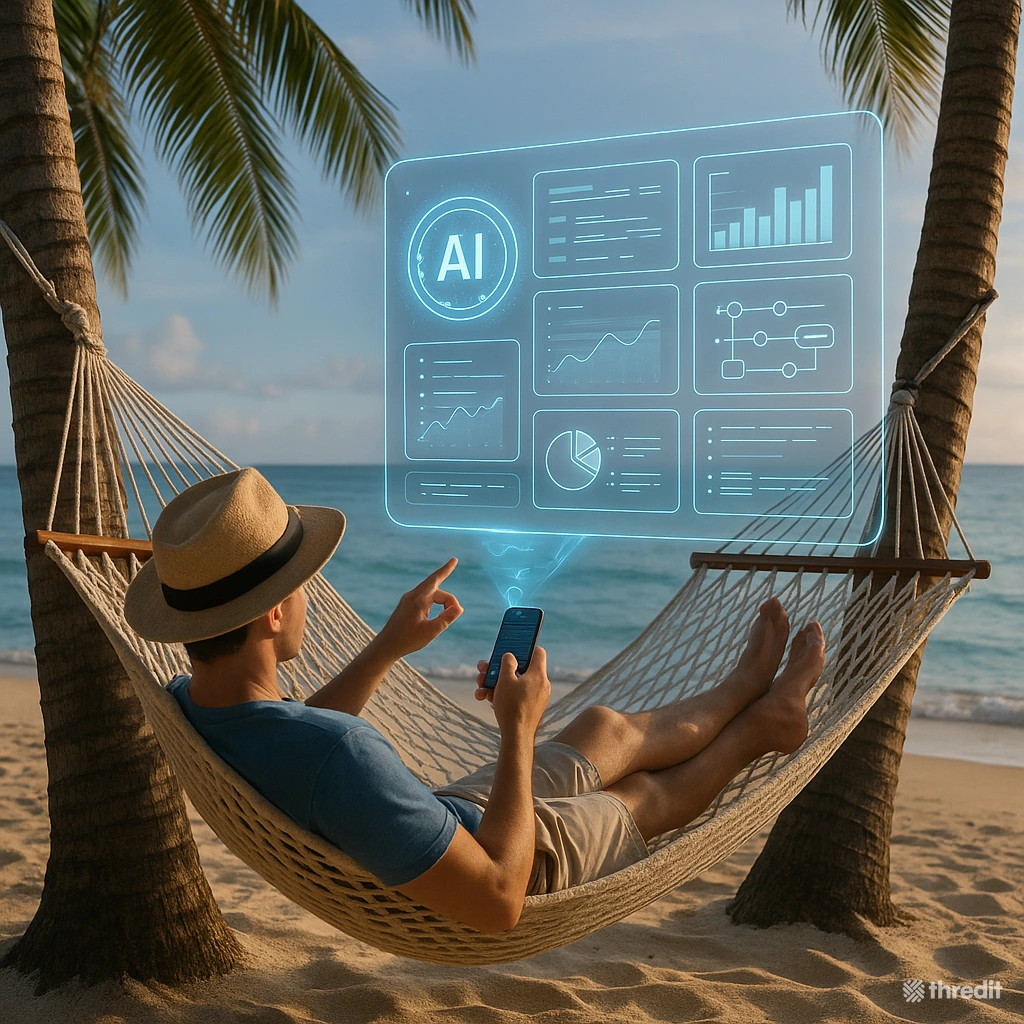🌴 The term “AI agent” is everywhere, but what does it really mean? In a landscape cluttered with buzzwords like “super agents” and “ambient computing,” the word has been stretched to the point of becoming almost meaningless. It’s time to cut through the noise and establish a clearer, more precise way to understand and categorize the semi-autonomous systems we’re building. Instead of getting lost in marketing hype, we can define agents by what they actually do and how we interact with them.
To bring clarity to the conversation, we can classify any agent along three fundamental dimensions: the time it works, the interface it uses, and the trigger that sets it in motion. This framework not only helps us understand the capabilities of current AI but also illuminates the path toward the next significant evolution: a new class of agent designed for a world where we aren’t tethered to our screens. This post will break down these three dimensions and introduce the concept of “Beach Agents”—a new type of agent that represents a major leap in how AI can integrate into our lives, productively and seamlessly.
A Clearer Framework: The Three Dimensions of AI Agents
To properly evaluate and compare AI agents, we need a common framework. The following three dimensions provide a technical and precise lens through which to view any agentic system.
1. Time (Scope of Work)
The most straightforward dimension is the duration an agent operates before it requires human interaction or delivers a result. This can range from seconds to hours.
- Seconds to Minutes: This is the realm of auto-completion or simple code generation tools that provide immediate assistance.
- Minutes to an Hour: More complex tasks, like drafting a document section or debugging a larger code block, fall into this category.
- Hours: Long-running tasks, such as conducting in-depth research or monitoring a system over time, require agents that can work autonomously for extended periods.
Time is a powerful proxy for complexity and dictates the interaction model. A task that takes two minutes is one you’ll wait for; a task that takes two hours means you’re doing other things while the agent works in the background.
2. Interface Modality
This dimension defines how a user interacts with the agent. The interface constrains and shapes the entire user experience.
- Console/Desktop: Requires the user to be at their computer, offering a rich environment for reviewing detailed outputs like code diffs or large documents.
- Mobile: Allows for more asynchronous interaction but is less suited for complex data review due to screen size limitations.
- Text & Voice: These “headless” modalities are the most flexible, allowing for interaction without a screen at all.
3. Triggering
The final dimension is what initiates the agent’s work. Triggers can be broken down into two main categories.
- Explicit: The user directly commands the agent to start a task.
- Implicit: The agent is activated by an external event in the world, such as a news alert, a stock price change, or a new email.
Let’s calm the hype a little bit and realize this whole notion of ambient agents being something big and new is a little overblown. Really all it is is just a new way of thinking about the triggering mechanism of agents. And yes, that’s a bit technical, but it’s also quite precise.
Introducing Beach Agents: The Next Evolution
Using this three-dimensional framework, we can define a new and powerful type of agent: the Beach Agent. As the name implies, it’s an agent that can remain productive even when you’re relaxing on the beach, away from your desk and with limited ability to interact with a screen.
Here’s how Beach Agents are defined by our framework:
- Time: 5+ minutes
- Trigger: Explicit & Implicit
- Interface: Text & Voice
The key innovation of the Beach Agent lies in its interface modality. While it performs long-running tasks and responds to both direct commands and world events, its defining feature is the ability to interact through simple, low-friction channels like text messages and voice calls.
A beach agent interacts with you in multiple modes and ways. The primary mode is text message. It simply sends you a text message when it’s got a question or something ready for your review. And when you reply back, you can ask questions or you can say, ‘call me.’ And they’ll call you and explain to you where it’s at, what it needs to keep making progress or whether it has a result for you.
Imagine an agent tasked with monitoring industry news. It could send you a text about a major company announcement. You could then reply, “Call me,” and have a brief conversation to get the key details and ask follow-up questions, all without ever opening a laptop or navigating a complex UI. This is a hands-free, eyes-free evolution of the agent concept, designed for a human in the loop who is minimally available.
Conclusion
By moving beyond vague marketing terms and adopting a structured framework, we can better understand the real advancements in AI. The concept of the Beach Agent isn’t about a single product but a new milestone in agentic capability. It represents the point where AI is smart enough to work productively for hours and connected enough to interact with us on our own terms, wherever we are. As these systems mature, they promise a future where our most powerful tools don’t demand our constant attention, giving us all more time to work on our tans.
